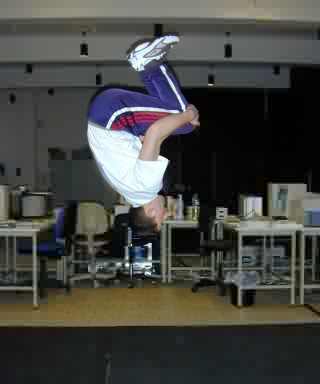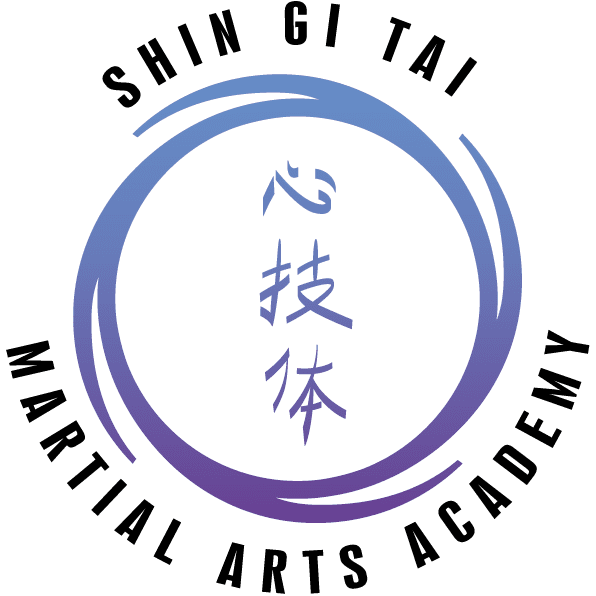For many people learning a martial art, involves someone teaching them to learn unnatural movements is this a contradiction.
I still think that its not a contradiction that we get taught unnatural movements when we get taught martial arts.
My first point is because if we were to be taught by what is natural to us it would mean we would just be repeating what we already know and what feels comfortable to us only ever concentrating on area’s of strength this would ultimately lead us to have massive gaps in our knowledge and skill leaving us vulnerable in the weaker area’s that would become more pronounced as time progressed we have to work on those weak area’s which feel unnatural to us in order to build that foundation block on which to base all are martial art movements, as without that all the time and practice in the world will not make our moves effective for martial art purposes
My second point is every person who comes into the dojo will have different inefficient natural movements, ways of moving and doing things which they have picked up at some point through their lifes, a few examples of negative natural movement for martial art purposes would be someone who when walking: bobs up and down/narrow gap between feet/slouched posture/chest puffed out/head down or up/dragging of feet/ leaning forward or backward etc these are a couple of the natural movements which we might expect people to do when they start their martial arts they must now try to unlearn them when training in order to make their martial art movements more effective, if anyone struggles with these or anything similar tai chi is a great way at looking into depth on this subject as body positioning and a stable balance are the top priority’s.
My example of natural movements is from gymnastics as I have been doing it for 19 years now and it still gets in the way of my progress in the martial arts because what is deemed effective and stylish in gymnastics is not the case in the martial arts so I have had to try and change things like getting rid of excessive tension in most of of my movements and moves like the back knife hand strike where I stretch my fingers and arm ready for a backhand strike currently changing this to be more efficient for martial art purposes I should try curving the structure of the hand into a stronger position for impact purposes this will benefit by reducing injury potential to my hand/fingers, to change this I need to start back at the Cognitive stage of learning and work my repetitions up and down the dojo trying to do maximum repetitions when doing basics or kata in training this ultimately will help me unlearn the ineffective movement and learn the effective one.
 Are ultimate goal is to learn effective natural movement in the martial arts but first we have to learn effective movement (natural comes later) this is done through are basics and forms/kata’s and to begin with this feels unnatural, but become less so as we work through the Associative/Autonomous stages of learning.
Are ultimate goal is to learn effective natural movement in the martial arts but first we have to learn effective movement (natural comes later) this is done through are basics and forms/kata’s and to begin with this feels unnatural, but become less so as we work through the Associative/Autonomous stages of learning.
Also people may just want to do what feels natural to them as this they feel is more effective for the situation unaware of the many flaws with the technique which could be used against them, most of the time especially to begin with it will be something to do with feet position or posture. One of the answers to this is yes relearning the technique the correct way will probably be less effective for you to start with (due to not being able to do things perfectly first go) but with good practice and time relearning the technique in a more effective way will be worth the time and effort. Especially if it is a skill you would consider using in a self defense situation where an effective move(s) are crucial for a positive outcome of the situation.
From what I have learned throughout this project I believe this system describes best are pathway from unnatural movement- natural movement in the martial arts.
1) Cognitive Movements are slow, inconsistent, and inefficient Large parts of the movement are controlled consciously
2) Associative Movements are more fluid, reliable, and becoming more efficient Some parts of the movement are controlled consciously, some automatically
3) Autonomous Movements are accurate, consistent, and efficient Movement is largely controlled automatically
Care must be taken especially in the cognitive-associative stages of learning because practice makes permanent not perfect, if you want to work towards making a move more effective practice making a positive change to the movement every time you train and don’t forget the positive changes you’ve already made in the past, if you practice something and have not listened and kept reminding yourself of the key points you are likely to end up performing moves that are full of flaws and bad habits leaving techniques performed either bad for your joints/off target/less powerful than you are capable, this is likely to be because of energy lost some where through the movement due to
1)neglecting using certain muscle’s groups in the chain reaction from toe to fist in a punch.(not using all the energy available)
2)poor posture-positioning (causes energy to disperse in different directions)
3)excessive tension (stopping much of the energy reaching its intended location, causes similar situation of trying to drive with the hand brake on)
These are 3 classic things to consider in the chain reaction of muscle movement from toe to fist in a punch.
Natural movement at a higher level
The high level grades will generally have good basics without having to think about it they would have got rid or made improvement to many of their inefficient ways of moving in there martial art training and learned many efficient principles and techniques which they can say they feel they have grasped and it feels natural to them) however when this stage has been reached they start to add different principles to there strikes including
power sourcing: Heavy punching by pushing through the back heel, light on the toes for quick snappy type techniques/use of hips or waist/shrug of the shoulder/Exhale of breath on impact etc.
Use of internal muscles for example in a punch not holding too much tension especially around the joints as energy must travel up the muscular system from the toes to the fist with excellent timing and coordination, higher grades look at this in deeper detail it may not look a lot different but when these principles have been mastered and applied its not much fun standing in the way of them,
Like an iceberg its deceptive it may not look dangerous from the surface but the dangerous bits underneath where you can’t easily see especially if you haven’t been trained to spot the tail-tail signs, coaches have to learn to spot such small movements it seems almost impossible for me at the moment to grasp how its done to the level of detail we see from our sensei and many other sensei’s around the country.
Obviously these things are not all trained at once that would be impossible to grasp instead they are looked at individually, once a student has good natural movement in a technique, all they need to consciously controlled is the new principle this is a new Cognitive Movement which is hard to grasp at first however with good practice and repetition the new movement/ principle is added to the natural movement of the student making their technique that bit more efficient than it was before, the student would continue down this path of adding more and more effective movements/principles together to produce a way of moving and doing martial art movements with ease and precision. Making them a deceptively dangerous opponent.
Perfection of natural movement in the martial art is something we should visualise and continue to work towards getting as close as possible when practising but is ultimately not something we will ever reach as there are always ways to improve, generally these things start big with the basics and move on to smaller and smaller things to change in the way we move our body to deliver a skill.
